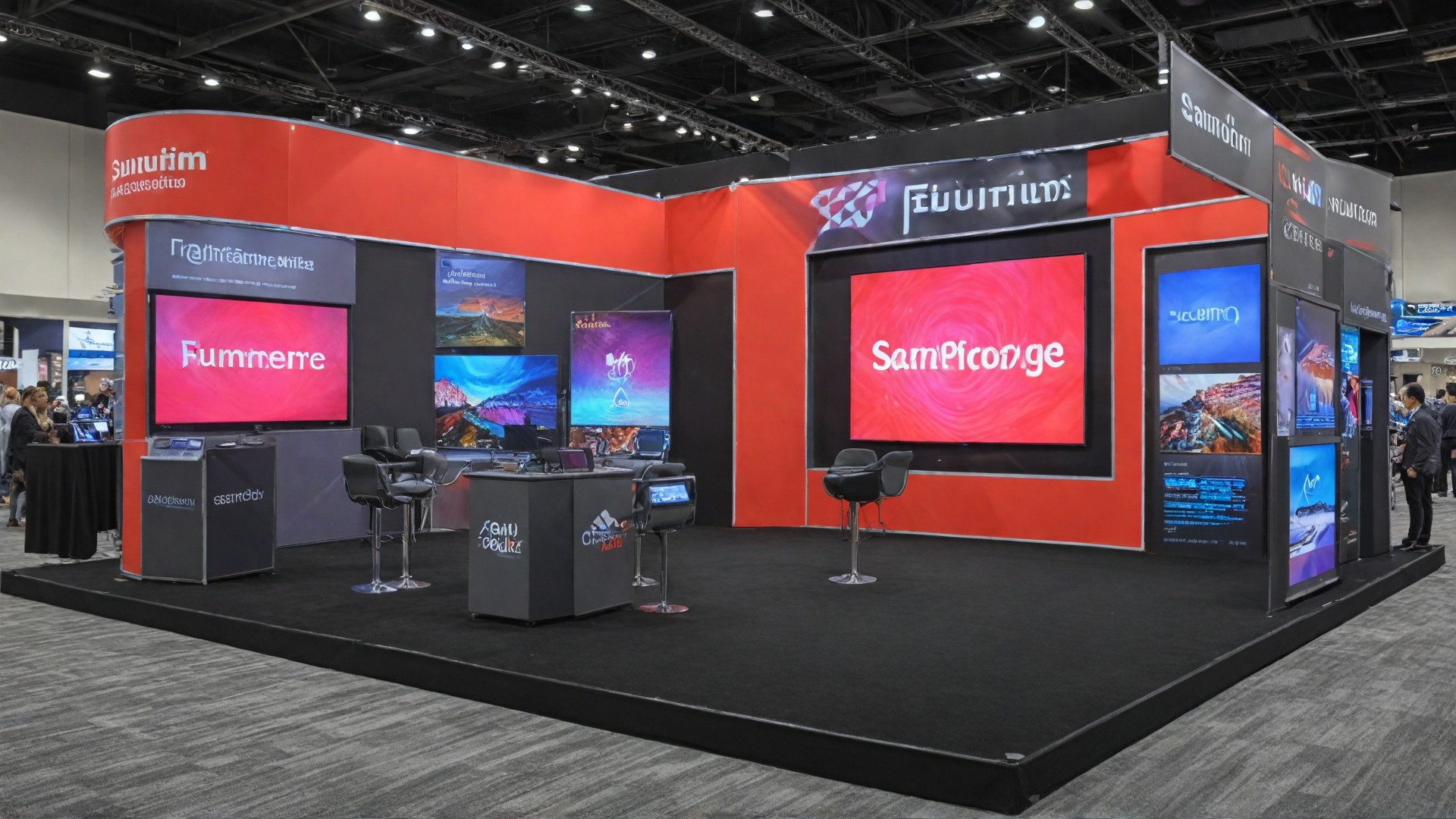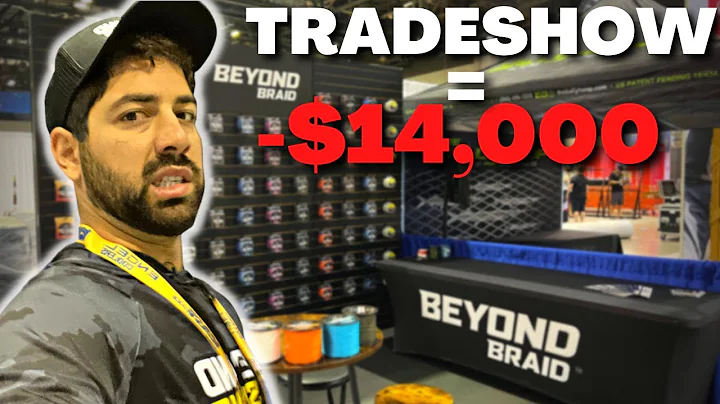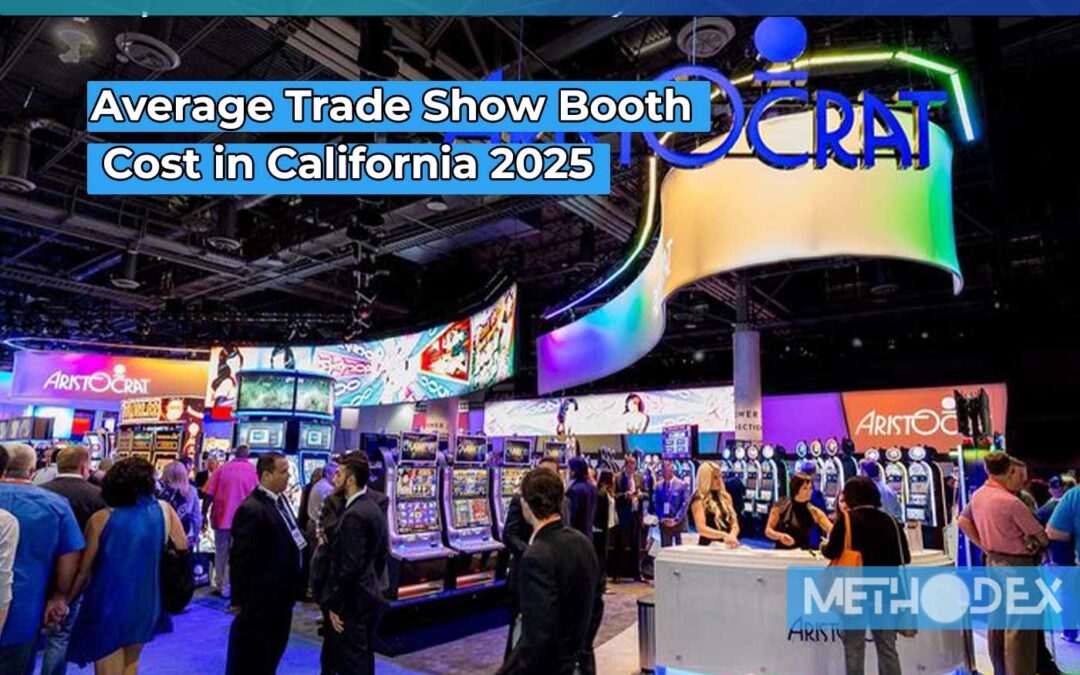Costs of a Trade Show Booth in Los Angeles ?

The costs for participation in a fair are not only its rental booth expenses or building costs, but also the additional expenses. However, we also consider in this article the costs of having a booth in the exhibition—the all costs +the booth rental fee. If the required budget is not available to exhibit by building a fully Customised booth, renting it is also a good option. The US trade show booth costs can vary pretty much, depending upon the size of the show, its location, type of the booth, and whether additional services are needed.Renting a booth at a trade show can be a significant investment, especially for small businesses. The cost of a booth typically varies based on the size and location within the exhibition hall. For example, a standard 10×10 booth can range from $2,000 to $5,000, depending on the trade show. However, the booth rental is just the beginning. Additional expenses include association fees, booth setup materials like walls and flooring, lighting, and furniture rentals. Labor costs for assembling and dismantling the booth also add up, with rates ranging from $100 to $250 per hour. On top of that, businesses need to factor in travel, accommodation, and marketing materials, which can significantly increase the overall cost of participating in a trade show. It’s essential to plan and budget carefully to maximize the return on investment. Here is a breakdown of potential costs:
A Real Story of Trade Show Costs from a First-Time Exhibitor

Hey there, my name’s David, and my company is CatchWave Gear, an online fishing brand. This year, we attended our first trade show, and I wanted to share my experience about the costs involved in case you’re a small business considering doing the same.
We participated in the CASTEX Trade Show in Orlando, and to give you an idea of the expenses, here’s a breakdown.
First, just securing a 10×10 booth cost us around $2,000. Most trade shows also have association fees, and for us, that was an additional $750, bringing the total to $2,750 at this point.
Next, we decided to rent a slat wall to display our products, which was about $1,500. Keep in mind, there are also labor costs to set up the booth. Companies typically charge $100 to $250 per hour for this kind of work.
We needed lighting, which cost us another $150 to rent. To save on some of the smaller costs, we bought a table off a second-hand marketplace for $50—a little money-saving trick. Folding tables like these can also be purchased on Amazon or at Home Depot and returned later if they’re still in good condition. So, by now, we were looking at about $3,200 in total expenses.
For the flooring, we used interlocking play mats that cost $250. If you plan to have any signage, remember to budget for that too—vinyl banners and signs can add up.
Then, there are the costs of staying at the trade show. We booked a hotel for five days at about $200 per night, and I had a staff member staying with me for four days, which was another $200 per night. On top of that, you’ve got flights, gas, food, and other travel expenses.
So, all told, the total for this trade show came out to about $10,000. Luckily, we had a great few months before the event, which allowed us to save up and be ready to invest in this. But if you’re a small business, you should know that trade shows can be very capital intensive.
Detail Costs of booth in Los Angeles Trade Shows
– Trade Show Booth Space Cost
– Small Regional Shows: $1,000 – $5,000
-Medium National Shows: $5,000 – $15,000
– Large International Shows: $15,000 – $50,000 or more
– Trade Show Booth Design and Construction
– Simple Booths: $1,000 – $5,000
– Custom Booths: $5,000 – $30,000
– High-End Custom Booths: $30,000 – $100,000 or more
-Marketing and Promotions
– Pre-Show Marketing: $500 – $5,000
– Promotional Materials (brochures, giveaways): $500 – $5,000
– Sponsorships: $1,000 – $10,000 or more
– Travel and Accommodation
– Flights: $200 – $1,000 per person
-Hotels: $100 – $300 per night per person
– Meals and Incidentals: $50 – $150 per day per person
– Staff Costs for Trade Show Booth
– On-site Staff (wages, per diem): $100 – $500 per day per person
– Temporary Staff: $100 – $300 per day per person
-Shipping and Drayage
– Shipping Booth Materials: $500 – $5,000
– Drayage (handling of materials at the venue): $500 – $3,000
– Miscellaneous Costs
– Electricity and Internet: $500 – $2,000
– Cleaning Services: $200 – $500
– Insurance: $100 – $500
-Total Estimated Costs of Exhibition Booth
– Small Shows: $5,000 – $15,000
– Medium Shows: $15,000 – $50,000
– Large Shows: $50,000 – $150,000 or more
These estimates can vary significantly depending on the specifics of the event and the company’s requirements. It’s essential to plan and budget carefully to ensure all potential costs are accounted for. Of course, if building a booth costs you much, the cheapest ones, which you could also buy, are economic booths, the features of which are given in the article for your reading.
the budget for a trade show depends on what elements?
1-Type and size of the trade fair
The type and size of event basically affects the cost of booth to a great extent. Smaller or local and regional fairs, which have a more specific target audience, also come cheaper to get booths at as the level of demand is on the low side and therefore the scale also is on the pretty small side. On the other hand, large national or international exhibitions generally possess larger, more socio demographically heterogeneous audiences and more prominent exhibitors, as the demand and prestige of the booth space and its construction cost increase accordingly. Larger exhibitions also tend to feature more amenities, services, and promotional opportunities, which may explain why they drive up the prices. Wider and more influential audiences attending the larger events tend to make exhibitors agree to pay a premium for these opportunities.
2-The geographic location of the tradeshow directly affects the cost of the booth
The address of an exhibition—the location—is one of the major factors that contribute to determining the price of a booth. For instance, shows put up in important areas of the country, like New York, Las Vegas, or San Francisco, will have relatively greater costs due to the superiority of location and heavier overhead traffic, leading to higher transportation charges in building the booth. Places such as well-established convention centers owe their demand, in most cases, to their superiority in reputation and better facilities, making them more expensive. More so, the expenditure of events held in small cities or in less prominent centers comes at a cheaper cost. In general, all costs that are incurred by the host city in servicing the exhibit, as an indicator of living costs and any other logistics including transportation and accommodation costs, are seen in the general price of the exhibit. Abiding to the rule, general costs of bigger cities are higher than smaller cities and so is cost in the construction of the booth.
3-The booth size is in direct relation with booth cost
Booth size into consideration as for the direct influence on the cost, it actually means that bigger spaces also cost bigger because the area that should be originally covered, costs by default more. The 10×10 booth is usually the standard in booths sizing and considered basic, and with such regard, sixth a 20×20 or even 50×50 booths might cost more additionally. Configuration is another spacial influence on determining the price of booth construction. In-line booths tend to be more cost-effective than corner or island booths, as they are surrounded by all the other booths and do not offer the same visibility and access. Large booths will simply require more materials and possibly also more labor for installation and dismantling, which increases the total cost of booth construction. Companies need to balance their requirements for space or booth with their budget and realize how this increases the booth size, the more the attendees it is going to attract, but at a cost.
4- The type of booth affects the cost of booth construction
The cost of booth construction depends highly on the type of booth. In fact, most cases will give out cheaper rates when dealing with basic types of standard booths—with carpet and walls and just a basic form of seat arrangement. However, a custom booth, which fits the brand and functional requirements with the use of specified materials for the design and construction, can be costly. Special and custom booths significantly complicate construction to involve skillful experts, take more time, and require much more expensive equipment; therefore, a booth design fee will, quite naturally, be higher than one for prefab creations.
Other than that, Custom Trade Show Booth Builder can accommodate anywhere from any unusual arrangement to very complex structure with finish on the top of the line. The most expensive are properly workshops that, due to their complexity and stringent security standards needed to be adhered to, not to mention that it further increases the floor area size by adding on the second level. Most are professional designs and these add up to the overall cost in this way.
5-Better booth location, higher booth making cost
Prime locations for the booth include those located at or near the event entrances, main corridors, and central areas. Such booths have an additional price attached to them as they offer increased visibility and are heavily trafficked by more individuals. This locates them under very high demand, as an individual has a high possibility of engaging when exposed better. Less prime places and are usually in more silent or less reachable areas are most of the time cheaper and can hence be overlooked. Considerations to be taken into account by the exhibitors include brand exposure, audience interaction, and, in general, objectives of the event; hence a decision has to be made in this trade-off between having better location versus higher costs and going in for a cheaper or dearer stand. Can they pay more for more visits
6-The event duration
Longer events are bound to have higher booth costs since the cost of the booth is dilated over a longer period, while one-day events cost less mostly due to less renting time and subsequently few resources serving enough time with staff and setting up or tearing down. Multi-day events, therefore, tend to be expensive to conduct because most logistics costs are increased, that is, pertaining to transportation, travel, and accommodation in booth space, also more capital goes into staff increased logistics since more breakup and combination need arise from folding service companies. This should be taken into consideration while planning for such extra days to host the trade shows. Of course, the exposure and networking opportunities created at extended events could help compensate for the greater costs. Also, consider that you are usually going to attend, say, trade shows related to your field—once or just maybe twice. Next, after the first of the year, put a plan in place for budgeting and see the necessary preparations that will have to be in place in order to present at the best point of the exhibition with a best display booth.
7- Consider services and facilities cost
This price is then determined by the amount of services and amenities included in the booth building package. Basic packages usually require the least facilities as they contain the normal booth space, basic rugs and a table accompanied by chairs. These then are the least expensive alternatives. However, full-service packages can dramatically raise costs by incorporating such services as set-up and breakdown, advanced lighting and electrical hookups, high-speed Internet access, premium furniture, custom graphics, and even cleaning services. The convenience and advanced functionality offered by such total packages can ultimately be worth it, especially for the user that desires high impact and exposure at the event.
8-Support packages for the exhibition
Raising booth prices usually takes the form of inclusion in sponsorship packages. On the other hand, since sponsorship money will boost benefits other than visibility and brand recognition, a trade show booth that enjoys participation or grassroots support typically receives little attention from the site’s visitors. Revolving in a different orbit, sponsorship packages can include exhibiting logos on event equipment and merchandise, physical and digital banners and boards, speaking spots, inclusion in ads, and dedicated networking events. Thus, these packages would greatly differ in terms of price and offer/cover, bearing in mind that any cost variations are either according to the level of user exposure or the number of users it is attracting, or how many it trades off and exposes your brand to. Also, large marketing sponsorships and marketing on social media for trade shows increase the perceivable amount of influence and visibility to an exhibitor, hence these packages are gainful in all their terms to exhibitors if only they want to steer maximum reach and influence among attendees. The more visitors you have, the more leads you pull in, the more sales, and the more users you get information from for future possible customers.
9-Early bird vs. late registration
The cost of the booth, as a result, throws in at different times of registration, such that early, the cost of the booth places is relatively very low and at times discounted, thus inexpensive, while towards the end it is vice versa. From the early registration and booking of the booth, therefore, it is probable that the price of the booth is offered at a fairly low rate hence appreciable value, while at the same time, it avails potential for financial saving through probable event sneak previews. This will help them plan and ensure participation. Conversely, late registration may mean forking out a lot of money due to demand and limited spaces. On top of that, last-minute bookings may also request higher charges and for you to take booths that have poor accessibility and visibility, too. But with preplanning, using advance rates, money is saved and better use of the event can ensue.
10 – The booth design upgrade costs more
The costs may run high, particularly when upgrading the booths, but they could substantially help in the attraction and public interaction with them. Such interactivity characteristics may include touch screens, VR, and live demonstrations that foster an enabling environment, which makes for great participation and produces both a memorable and immersive experience. But these would also bear an extra cost in investing in technology and, most importantly, employing staff. From custom graphics to high-end added lighting, specialty materials take aesthetic value and function of the booth to another level. These upgrades not only increase costs during the initial purchase but can further increase installation and maintenance costs. Companies must consider the potential return on investment that comes with these developments and weigh the elevated costs against the potential for greater participant engagement and brand impact.
11- Labor union requirements in certain parts of America
Union labor may have an effect on both cost and location. Some places—especially in large cities—demand the need for union workers for set-up, tear-down, and some services, including electrical work. Union labor is paid more and more expensive because of standards and such. These costs can substantially add up to the overall cost of the trade show. Moreover, union rules frequently prove a problem in that they restrict the number of tasks exhibitors would do themselves and increase dependency on hired labor. Knowledge and timely preparation for such requirements are vital to proper budgeting participation in such events across the union, for the avoidance of potential costs that the company does not foresee paying.
Cost of Rent Trade Show Booth in Los Angeles ,CA
Exhibition Booth Rental Cost Guide
US trade show space rental can therefore cost considerably more depending on the location, accessories associated with the exhibit, and the size of the display. On an average, the rate goes from $38 a square foot to $150 per square foot if reductions or special discounts don’t apply. Average expense is between $5,000 and $10,000 for a 10×10 booth, and other bigger size booths can be over $20,000. The higher prices will be in cities and big shows, due to cost of demand and service; however, this is an average price for Booth Rental Services in the United States. This number varies from one company and manufacturer to the other due to the material of the booth and the reasons we have just said, but you can use the prices below as an estimate for all budgets by default. Please contact us for a more specified inquiry. Between $100 and $150 per square foot, companies can use more creativity by going for more customization and uniqueness in the booth. They usually bring forward more elaborate designs while bearing better quality of the materials that go into these booths to offer a unique look and better brand representation.
Design and construction of the booth space, material handling, ancillary service costs like electricity, and the internet, miscellaneous cost components, and bills involved in setting up the booth are some of the key considerations as far as the total cost is concerned in the process of both booth renting and booth establishment. All such costs are expected to be sufficiently budgeted for and planned carefully for harmonious administration. if you are interested to know more about hidden costs of attending to trade shows you can click on blue link

